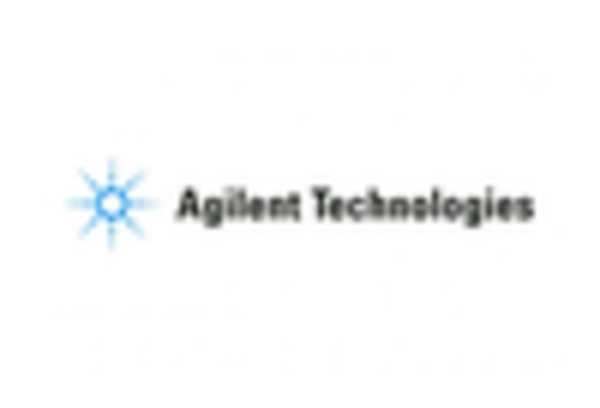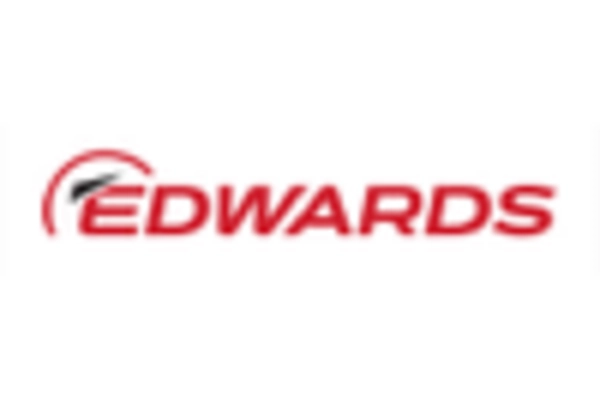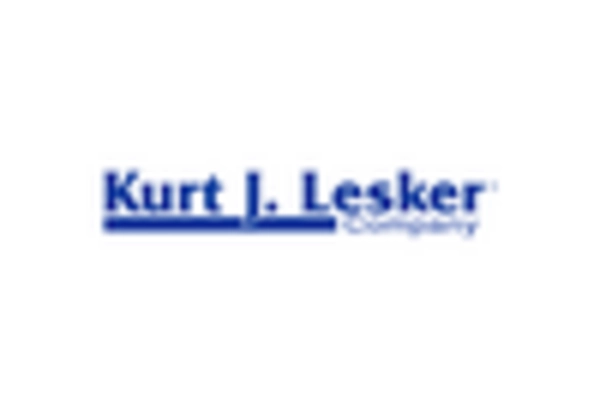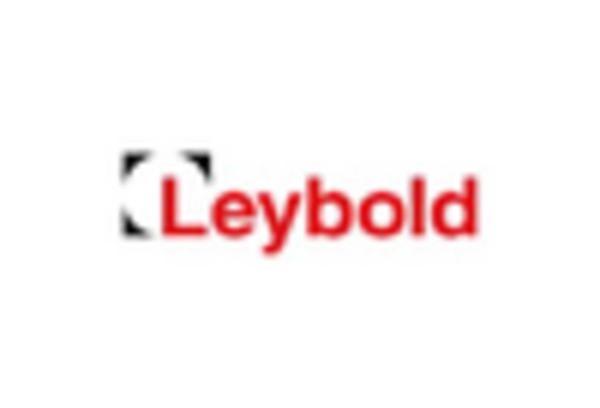Emerging Applications in Food Packaging
The vacuum sensors market is witnessing growth due to the emergence of new applications in food packaging. As the food industry increasingly adopts vacuum packaging techniques to extend shelf life and maintain product quality, the need for reliable vacuum sensors becomes apparent. These sensors ensure that the vacuum levels are maintained during the packaging process, which is crucial for food safety. The US food packaging market is expected to reach $50 billion by 2025, suggesting a significant opportunity for vacuum sensor manufacturers to cater to this expanding sector. This trend is likely to enhance the vacuum sensors market.
Increased Automation in Industrial Processes
The vacuum sensors market is poised for growth due to the rising trend of automation in industrial processes. As manufacturers strive for efficiency and precision, the integration of vacuum sensors into automated systems becomes essential. These sensors provide real-time data, enabling better control over production processes. In 2025, the automation market in the US is projected to surpass $300 billion, indicating a strong correlation with the vacuum sensors market. The demand for advanced vacuum sensors that can seamlessly integrate with automated systems is likely to drive innovation and expansion within the vacuum sensors market.
Rising Demand in Semiconductor Manufacturing
The vacuum sensors market is experiencing a notable surge in demand, particularly driven by the semiconductor manufacturing sector. As the industry continues to expand, the need for precise vacuum measurements becomes increasingly critical. Vacuum sensors play a pivotal role in ensuring optimal conditions during the fabrication of semiconductor devices. In 2025, the semiconductor market in the US is projected to reach approximately $200 billion, with vacuum sensors being integral to maintaining the required vacuum levels. This growth indicates a robust opportunity for vacuum sensor manufacturers to cater to the evolving needs of this high-tech industry, thereby propelling the vacuum sensors market forward.
Focus on Energy Efficiency and Sustainability
The vacuum sensors market is being positively impacted by the growing emphasis on energy efficiency and sustainability across various industries. Companies are increasingly seeking solutions that minimize energy consumption while maintaining operational effectiveness. Vacuum sensors contribute to this goal by optimizing processes that require vacuum conditions, thereby reducing energy waste. In 2025, the US market for energy-efficient technologies is projected to reach $100 billion, indicating a favorable environment for vacuum sensors that align with sustainability initiatives. This focus on energy efficiency is likely to drive demand within the vacuum sensors market.
Growth in Research and Development Activities
The vacuum sensors market is significantly influenced by the escalating research and development (R&D) activities across various sectors, including pharmaceuticals and materials science. As organizations invest heavily in R&D to innovate and improve product offerings, the demand for vacuum sensors is likely to increase. These sensors are essential for experiments requiring controlled environments, such as vacuum chambers. In 2025, R&D spending in the US is expected to exceed $600 billion, suggesting a substantial market for vacuum sensors as researchers seek reliable and accurate measurement tools to enhance their experimental outcomes. This trend is likely to bolster the vacuum sensors market.
















Leave a Comment